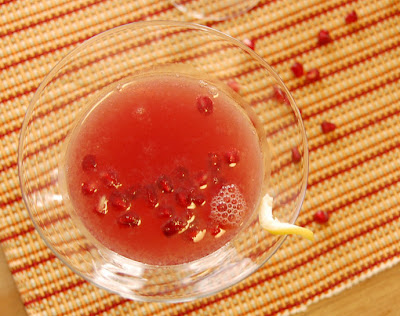Cooking long hours is fun on Thanksgiving but on New Year's Eve nobody wants to be in the kitchen except to pass through on the way to the freezer to refill the ice bucket.
The perfect at-home meal on New Year's Eve is one that has pazazz, great flavor and doesn't take long to prepare.
With expectations high, everything about a New Year's Eve party needs to be specialTake-out deli sandwiches are fine to watch the weekly football game. Pizza and beer works for a Netflix festival of Tarantino movies. But for the night when you say goodbye to a whole year's experience and celebrate what's-hoped-for in the coming 365 days, it isn't enough to simply put food on the table.
If you're having a small gathering of friends and loved ones, easy-to-make scallops are an elegantly delicious way to tell everyone how much you love sharing this end-of-the-year evening with them.
Experimenting with samples of Alaskan seafood sent to me by the
Alaska Seafood Marketing Institute, I have been happily trying out different techniques with their
halibut, cod, king crab legs and salmon.
The Alaskan scallops, caught off the Kodiak coast, were beautifully plump and firm. The size of fifty cent coins, since they were thick, they could hold up to the high heat of searing.
Scallops play well with othersBecause scallops have a delicate flavor, they work well with buttery, sautéed spinach and earthy shiitake mushrooms. They are also good sliced and sautéd before being tossed with pasta in a sauce of roasted tomato sauce and garlic.
With dense flesh, scallops mimic the hearty flavor of steak so they can be seared whole with thick cut onion rings.
Scallops go well with a crisp, chilled white wine, an icy cold beer or, my favorite, a perfect
Manhattan. Whatever beverage accompanies your scallops, you can toast all that was good about 2012 and all that you hope for in 2013.
Seared Scallops on a Bed of Sautéed Spinach and Shiitake MushroomsAs with any seared dish, obtaining the best quality ingredients is an essential starting point. Whether you are searing fish, shellfish, poultry or meat, high heat creates a blush of caramelized sweetness on the outside. After that, the dish is all about what's on the inside.
Key to searing is using a pan that can tolerate high heat. Stainless steel pans should not be used because too much work is required to clean them.
A cast iron pan or one designed specially for high heat cooking is preferred and can be found in restaurant supply stores like
Surfas in Culver City. To prepare this dish, I used the French
de Buyer carbon steel frying pan which is designed to be used at very high heat with only a small amount of oil.
Serves 4Ingredients16 large scallops, washed, pat dried
1 bunch spinach, root ends removed, washed in clean water, dried
4 shallots, ends and outer skin removed, cut into rings
2 cups shiitake mushrooms, washed, dried, root ends trimmed of any dirt, thin sliced
2 garlic cloves, peeled, finely chopped
3 tablespoons olive oil
1 tablespoon sweet butter
1/4 teaspoon cayenne (optional)
Sea salt and black pepper to taste
DirectionsCut off the spinach stems, finely chop and sauté in a frying pan with 1 tablespoon olive, the shallots, garlic and mushrooms until lightly browned. Roughly chop the spinach leaves and add to the sauté. Cook until wilted and set aside. The vegetable sauté can be prepared ahead.
In a bowl, season 1 tablespoon olive oil with sea salt, freshly ground black pepper and cayenne (optional). Add scallops. Toss well to coat. Set aside.
Place a cast iron or carbon steel frying pan on high heat, add 1 tablespoon olive oil. Place the scallops in the hot pan. Do not crowd the scallops. If they are too close together, they will steam rather than sear.
Using tongs, turn the scallops so all sides are lightly browned. When each scallop is cooked, place on paper towels to absorb excess fat.
Reheat the sautéed spinach and place on a serving platter. Arrange the scallops on top.
Serve hot with a cold beverage.






































,+Sep+9,+2012.jpg)








